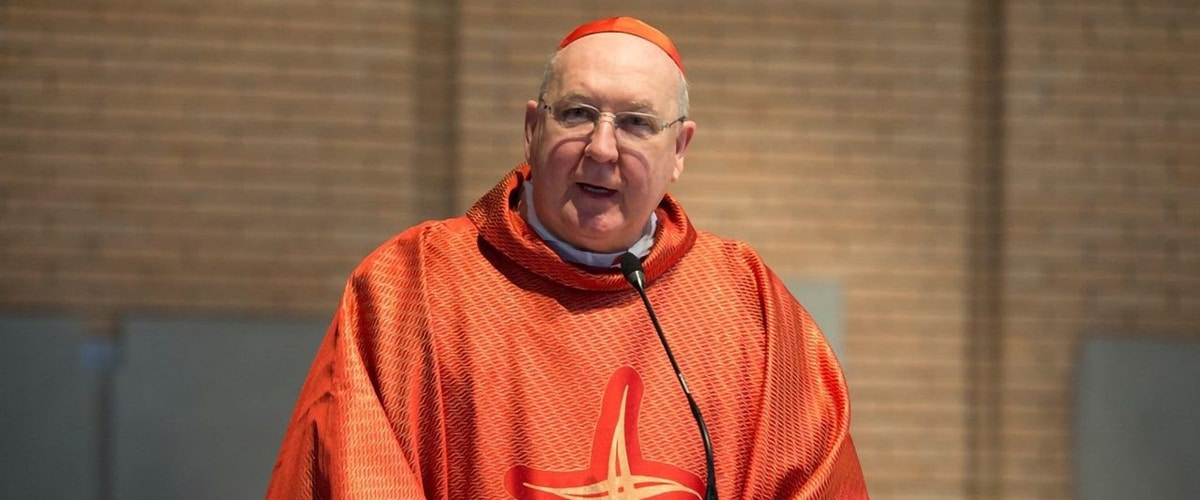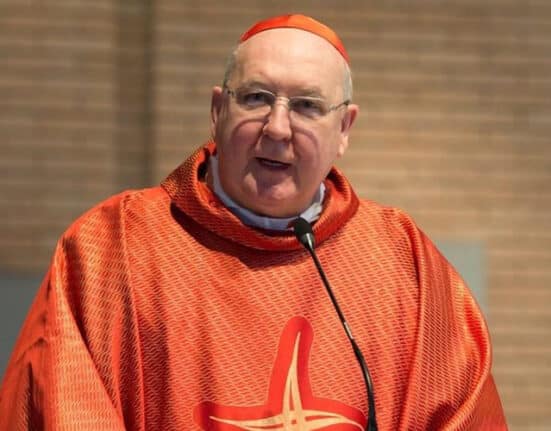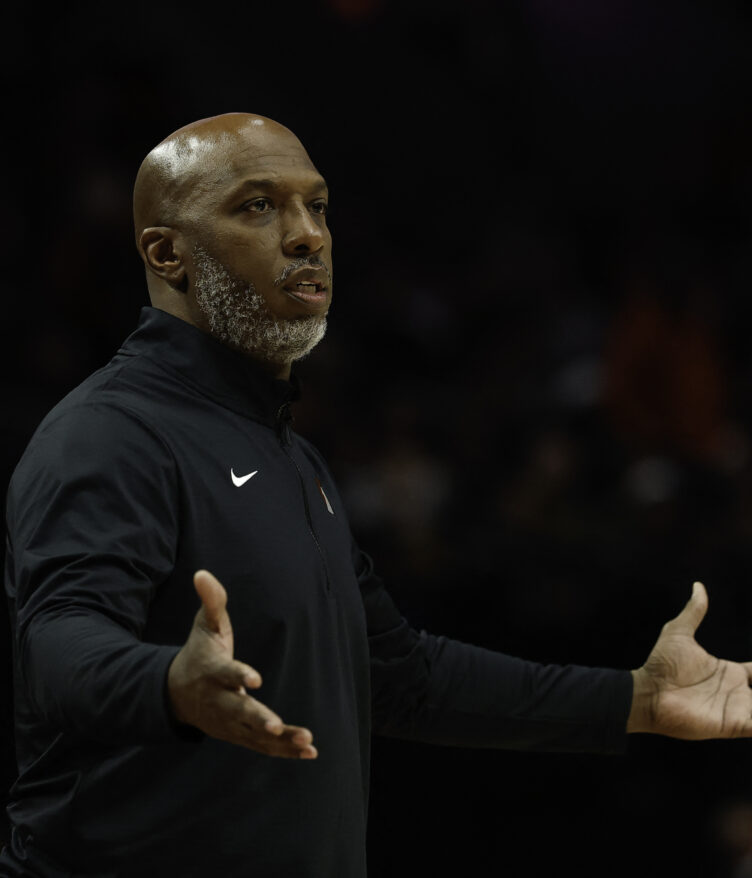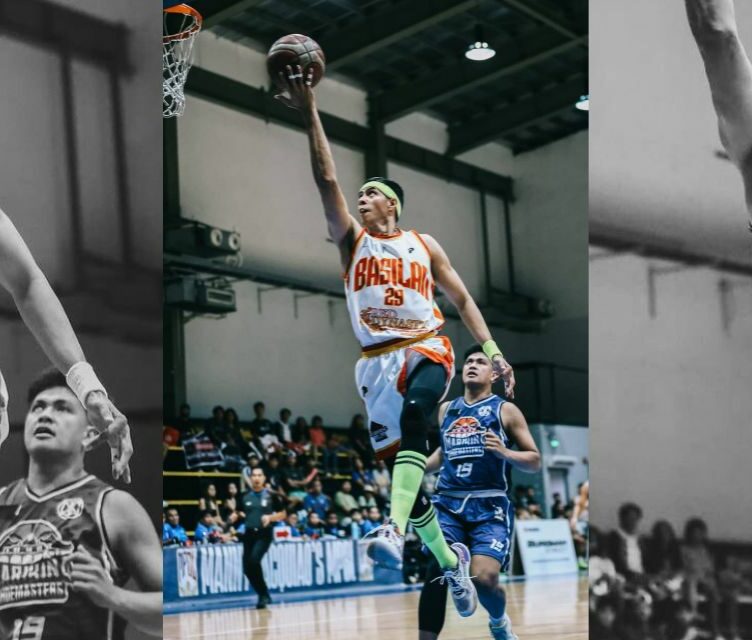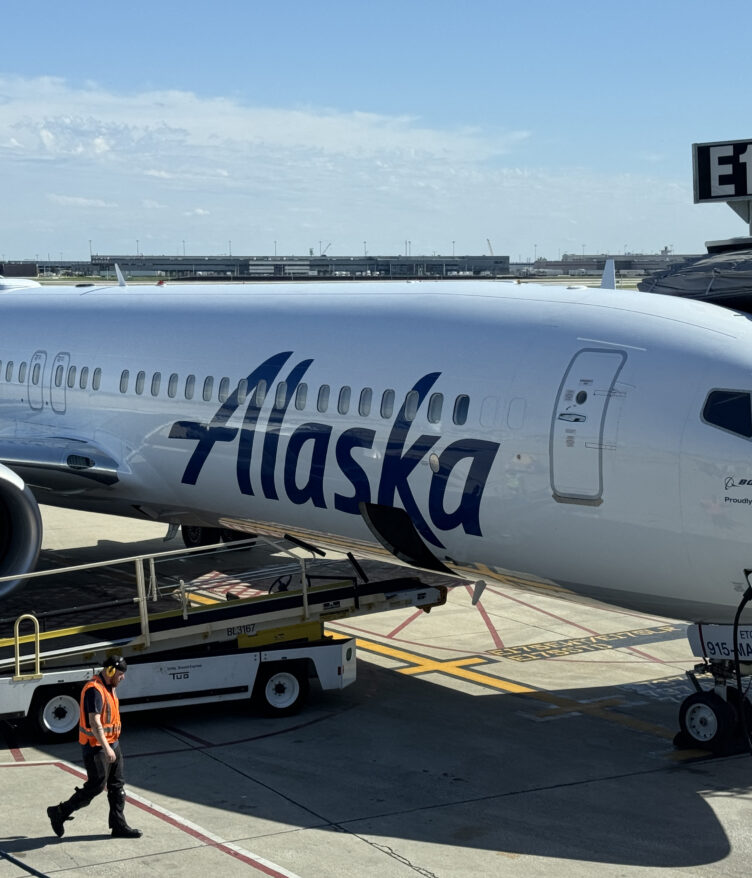THE echo of Easter Sunday still hung in the air, its message of renewal and hope barely settling when, just a day later, the world was met with devastating news.
Pope Francis had passed away.
In the midst of the sorrow, it was Cardinal Kevin Farrell— an Irish-American figure— who stood in front of the cameras and broke the sad news.
It was at this moment that Farrell was entrusted with a significant role in this transition of the church— as the “camerlengo”, he must ensure that the Vatican continues to function smoothly in the absence of a Pope.
This pivotal role demands not only the delicate management of Church affairs but also the solemn responsibility of overseeing the preparations for the papal conclave that will ultimately select the next leader of the Catholic Church.
Farrell must also oversee the centuries-old ceremonies to mourn Pope Francis, guiding the faithful through traditional rituals as they say their final goodbyes to their beloved leader.
But who is the man now tasked with holding the church together in the time of its mourning? Who is Cardinal Kevin Farrell, the Camerlengo at the heart of Vatican’s most solemn hour?
The Church’s caretaker in mourning
Cardinal Kevin Farrell was born in Dublin, Ireland, on September 2, 1947, as the second of four sons. Coming from a family deeply devoted to the Church, his elder brother, Brian Farrell, was appointed secretary of the Pontifical Council for Promoting Christian Unity in the Roman Curia in 2002.
Cardinal Farrell’s academic journey reflects a deep commitment to both theology and broader scholarship. He went to the University of Salamanca in Spain, obtaining a Bachelor of Arts Degree.
After that he headed to Rome to study at the prestigious Pontifical Gregorian University, where he obtained a Master of Philosophy and a Licentiate in Theology.
On December 24, 1978, Farrell was ordained as a priest for the Legionaries of Christ by Cardinal Eduardo Pironio at the Our Lady of Guadalupe Basilica in Rome.
Throughout his career, Farrell served in various roles at churches across the globe, including as a chaplain at the University of Monterrey in Mexico and at a parish in Bethesda, Maryland. Over the course of more than 30 years, the 77-year-old devoted much of his work to serving churches in the United States.
On March 06, 2007, Farrell was appointed as Bishop of Dallas under the then Pope Benedict XVI.
He also served as a consultant to the Committee on Migration within the United States Conference of Catholic Bishops (USCCB), where he provided guidance to the Migration and Refugee Services department.
It was not until 2016 that the late Pope Francis appointed Farrell as prefect of the newly created Dicastery for Laity, Family, and Life in Rome, raising him to the rank of cardinal.
In 2019, Pope Francis appointed Farrell as camerlengo of the Holy Roman Church.
A Camerlengo’s Duties
As camerlengo, Cardinal Farrell’s first duty was the formal certification of the Pope’s death. He is required to declare the pope’s death, traditionally by calling out three times, “The pope is dead,” though this is often done quietly today.
After this, he seals the Pope’s apartments to prevent unauthorized access. He is in-charge of safeguarding papal documents, including important official records until a new pope is elected.
He oversees the necessary steps to prepare the pope’s body, and presides over the burial ceremony to ensure that proper rituals and procedures are carried out.
The Camerlengo is also expected to oversee the closing of the coffin and the final procession.
But the biggest responsibility, perhaps, of a Camerlengo is to oversee the critical preparations for the papal conclave, the pivotal process by which a new pope will be elected.
This includes managing the logistics of the conclave, especially coordinating the preparation of the Sistine Chapel and ensuring the security and secrecy of the voting process.
He will also preside at the beginning of the process, ensuring that the conclave is held according to the strict guidelines outlined in the Apostolic Constitution Universi Dominici Gregis.
But despite his significant role, the Camerlengo must ensure that he does not have a direct role in the election of the pope, all the while making sure that no outside interference occurs.
While it is rare, the camerlengo role has historically seen holders ascend to the papacy themselves, such as Gioacchino Pecci (Pope Leo XIII) in 1878 and Eugenio Pacelli (Pope Pius XII) in 1939.
Cardinal Farrell will play a crucial role in confirming Pope Francis’s death and preparing his body for the final rites. This includes presiding over the solemn procession that will carry the pope’s remains from the Domus Santa Marta chapel to St. Peter’s Basilica, where the faithful will pay their final respects.
The process is expected to begin in the coming days, with the Vatican preparing for the ceremonial transition.
How useful was this post?
Click on a star to rate it!
Average rating 0 / 5. Vote count: 0
No votes so far! Be the first to rate this post.
We are sorry that this post was not useful for you!
Let us improve this post!
Tell us how we can improve this post?

